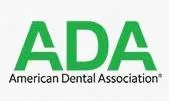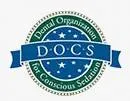Advanced Technology for Advanced Dental Treatments
Quality Dental Care for Sacramento, CA Patients
Top Sacramento Dentist
Treat, Restore, Enhance Your Smile

Stonebrook Dental is a leading dental clinic near Sacramento, CA offering comprehensive dental work all under one roof. Specializing in general, cosmetic, restorative, preventive, and emergency dentistry, we make it convenient for your family to get all their dental needs cared for in one place. Whether you require routine checkups, urgent dental care, or a complete smile makeover, our team is here to provide exceptional service for every stage of your dental health.


Cosmetic dentistry
Cosmetic dentistry is essential for enhancing the appearance of your teeth and boosting your self-confidence. A personalized smile-makeover can correct stains, chips, gaps, or misalignment, giving you a radiant smile you’ll love to share.

General Dentistry
Our general dentistry services include dental exams, professional cleanings, digital X-rays, tooth-colored fillings, preventive sealants, and gum care. We also provide fluoride treatments, oral cancer screenings, and personalized treatment plans to keep your smile healthy at every visit.
Committed to Your
Dental Wellness
We are dedicated to your long-term dental health and well-being. With a focus on preventive care

Certifications & Professional Memberships







Comprehensive Services
Stonebrook Dental offers comprehensive dental work all under one roof. Specializing in general, emergency & cosmetic dentistry, restorative, family & preventive dentistry

Family Dentistry
Our family dentistry services make it easy for everyone to get checkups in one convenient location.
Preventive Dentistry
Preventive dentistry covers regular exams, professional cleanings, fluoride treatments, sealants, and patient education to help prevent cavities and gum disease before they start.
Emergency Dentistry
Emergency dentistry at Stonebrook Dental covers urgent care for toothaches, broken or knocked-out teeth, dental injuries, infections, and other sudden dental issues to provide fast relief and protect your oral health.
Book Your Dental Appointment with Us
Ready for a healthier or confident smile? At Stonebrook Dental, our friendly team is dedicated to making every visit comfortable and convenient for you and your family. Whether you need preventive care, cosmetic enhancements, or emergency dentistry, we’re here to help. Simply fill out our easy online form or give us a call to schedule your next appointment. Book your dental appointment with us today and experience quality care in Sacramento!

Our Patients Say
Patient Experiences That Redefine the Future of Stone Brook Dental

Location
911 Howe Avenue Sacramento, CA 95825
Transform Your Smile Today!

Clinic Hours
Monday to Saturday : 9:00 AM – 6:00 PM
Emergency Appointments
Available during regular hours. Please call us immediately for urgent dental issues.
Experience top-quality dental care at Stonebrook Dental, your trusted dental clinic near Sacramento, CA. From preventive checkups and cosmetic dentistry to emergency treatments, our skilled team provides comprehensive services for the whole family—all under one roof. Discover a welcoming environment and a healthier smile with us today!
We can’t wait to meet you!
Whether you're joining us for dental care, a smile consultation, or just arriving for the first time, our team at Stonebrook Dental is here to greet you with warmth and expert care
Dentist Office Information
Procedures & Services
© Copyright 2025 Stonebrook Dental. All Rights Reserved. | Sitemap
Powered by Get Top Listed Inc. | Disclaimer | Privacy Policy







Facebook
Instagram